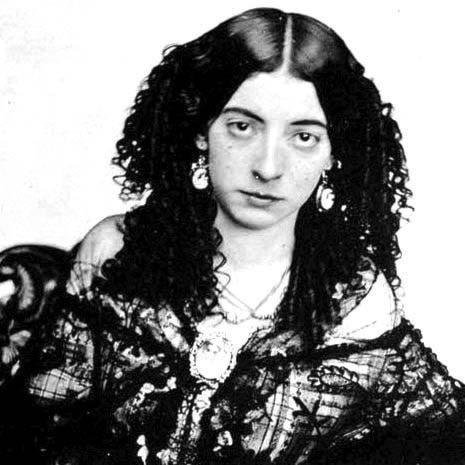Mike Selby
It was 2013 when the Danish heavy metal band Volbeat sung "Feel the fire where she walks / Lola Montez so beautiful / Shady and a tempered dame / Blinding your eyes with her spider dance."
The song goes on to describe the hypnotic effect Lola had on men, her bewitching dancing style, and even how — when angry — she would hit people in the face with a horse whip. All of these characterizations of Lola are not only true, but are actually quite tame when compared to the exploits of the actual person.
The Spanish dancer Lola Montez was in reality Irish-born Eliza Rosanna Gilbert. She was born just outside Limerick in 1821 to her teenage mother and a hapless army officer. All three relocated to India when the army transferred her father there, but he died of cholera upon arrival. From here Eliza is passed back and forth between British boarding schools, each one seemingly unable to tame her increasingly ill temper.
For her 16th birthday, her mother arranges for her to be married to an elderly judge, but these plans are thwarted when Eliza secretly marries her mother's boyfriend instead.
Long before anyone can recover from the above, Eliza leaves everyone behind, and journeys to England to marry for a second time. Upon discovering that she is already married, her new husband kicks her out into the street. Finding herself unwanted, uneducated, and unemployable, Lola completely reinvents herself.
The Irish-born girl raised in India is now Lola Montez — a Spanish dancer claiming to be the widow of an assassinated Spanish officer. She even spoke with a heavy Spanish accent.
It was her dancing that made her a household name all over Europe. Lola's infamous "Spider Dance" was an adaptation of one known as the "Tarantella" which hailed from Southern Italy. Dressed in numerous articles of clothing, Lola mimed they were full of spiders, removing more and more layers as the dance progressed.
Soon she was having numerous affairs with numerous married men, including composer Franz Liszt, author Alexandre Dumas, and King Ludwig I of Bavaria. Historians are unsure whether Ludwig abdicated his throne for her and because of her, but either way it was to no avail. She had already taken up with and married a British army officer she had met in Switzerland. Returning to England with him they were both arrested on bigamy charges (Montez was still legally married to her mother's boyfriend). They quickly fled to Spain, where her new husband mysteriously drowned.
Having exhausted most of Europe, Lola boards a ship and arrives in San Francisco in the summer of 1853. Her reputation has preceded her, and people lined up night after night to see her Spider Dance, with now includes a horsewhip and a pistol. She marries the owner of a local newspaper, who quickly divorces her when he discovers she was having an affair with a local doctor, who was later found shot to death.
Having exhausted the United States, Lola takes her act to Australia, where virtually the exact same scenario takes place. Illegal marriages, affairs, arrests, and scandals. Lola quickly returns to America, where she dies of syphilis on her 39th birthday.
Danish heavy metal bands aren't the only ones to have written about her.
In 1891, Sir Arthur Conan Doyle bases a character on Lola in his very first Sherlock Holmes story 'A Scandal in Bohemia.' She appears again in Edison Marshall's 1950 book 'The Infinite Woman,' Cecil Saint-Laurent's book 'La Vie Extraordinaire de Lola Montes' (1955) and in George MacDonald's 'Royal Flash' (1970).
She continues to appear in J. B. Priestley's short story collection 'The Carfitt Crisis' (1975), Isabel Allende's 'Daughter of Fortune' (1999), and again in the aptly named novel 'Spider Dance' (2004) by Carole Nelson Douglas.
More recently, Marion Urch's book 'Invitation to Dance' is a massive historical epic based on Lola's life—specifically focussing on her Irish roots.
In nonfiction, two biographies have been written (both in 1996). Bruce Seymour's 'Lola Montez, A Life' is exactly that, while James F. Varley's 'Lola Montez: The California Adventure's of Europes Most Notorious Courtesan' looks at her time in San Francisco.
Before she perished away from the ravages of syphilis, Lola herself wrote a book titled 'The Arts of Beauty.' This is basically a makeup and etiquette guide for both men and women. Another book published just after her death was titled 'Autobiography and Lectures of Lola Montez' is a collection of sermons compiled by a Reverend Charles Burr. Whether she actually had any hand in this last work is debatable, but her ability to reinvent herself is sure keep numerous authors and Danish heavy metals bands fascinated with Lola Montez.
Mike Selby is
Reference Librarian at the Cranbrook
Public Library
